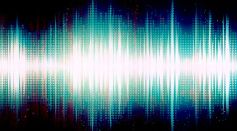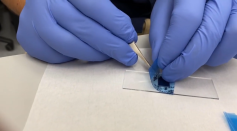Tags: Physics

Tetrahedral Form of Water Might Explain Its Unique Behavior

Researchers Calculate the Fastest Possible Speed of Sound
Meet 5 Women Who Made Scientific History
When Two Black Holes Collide, the Result "Chirps" Not Once, But Multiple Times

Discovery Suggests a Supernova Exploded Near Earth 2.5 Million Years Ago
New Measurement Technology Paves Way For Nuclear Clocks

3 Characteristics of Water That Seem to Defy the Laws of Physics

Physicists Develop Nano-Sized SQUID Capable of Detecting Extremely Faint Magnetic Fields
Scientists Build A Mechanical Switch With Origami

Dr. Katie Mack Presents Five Possible End Scenarios for the Universe

Scientists Capture the Moment Fluids Act Like Solids

[COVID-19 Update] How Does the Weather Affect Covid-19 Droplets?

10 Game-Changers in Various Fields of Science, According to Nature

Century-Old Physics Problem Solved by a Student
Physicists Copy Some Properties of the Sun in a Ball
Tracking the Separation of Atoms with Lasers
Water’s Weirdness Explained
How the Giant Sea Spiders Get Around the Laws of Physics
Odderon Particles: The Most Non-Particle Particles
Physicists Are Now Listening to the Quantum Vacuum
Most Popular

Memory and Learning: How the Brain Stores, Retrieves, and Forgets Information

Gut Microbiome 101: How Gut Bacteria Influence Immunity, Mood, and Metabolism

Antibiotic Resistance: How It Develops and Why Misuse of Antibiotics Is Dangerous

How Solar Activity Shapes Our Planet: What the Next Solar Maximum Means for Earth





